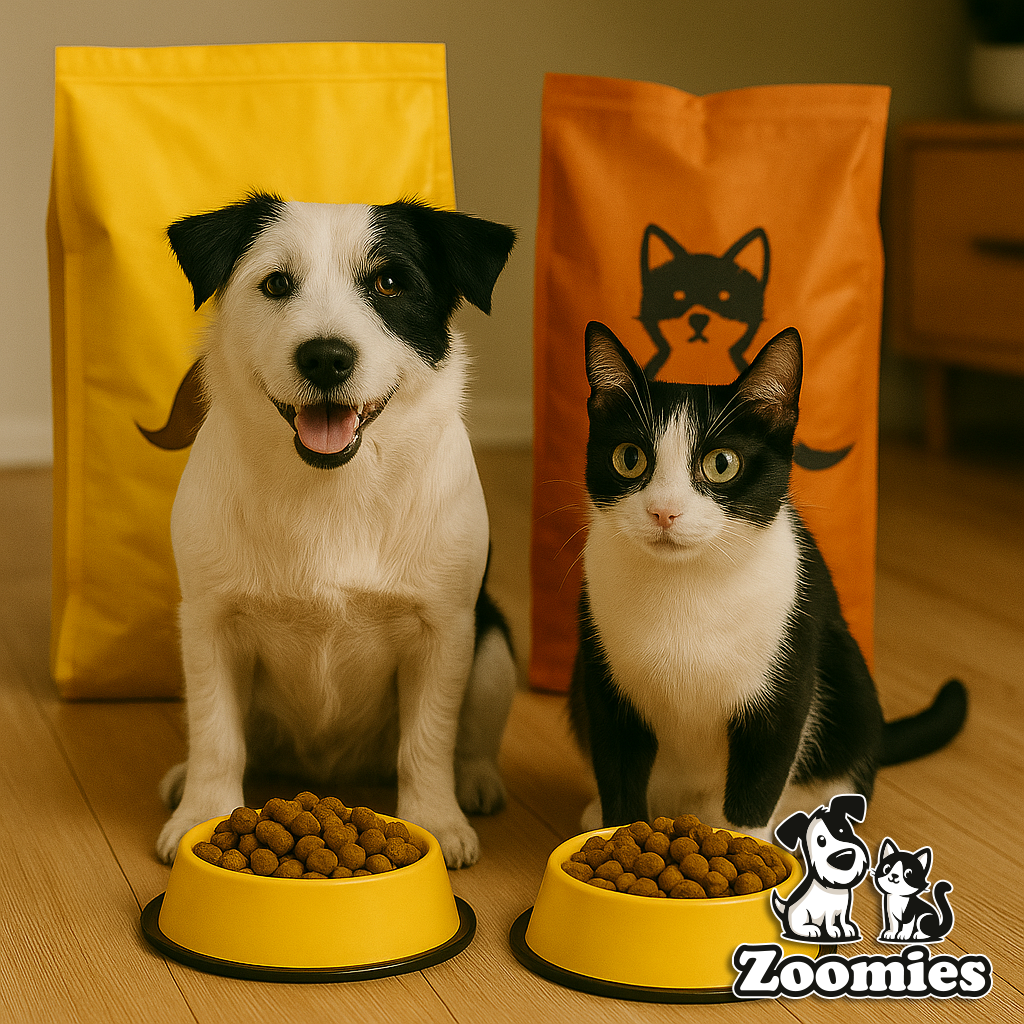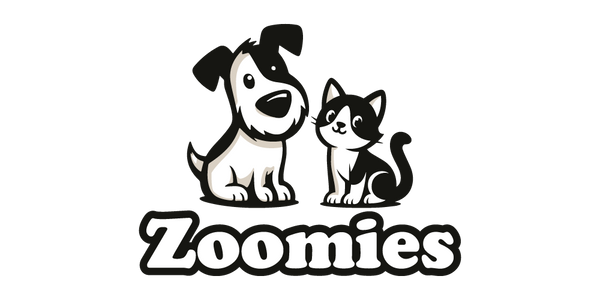🥫 How to Read Pet Food Labels Like a Pro

You love your pet like family — and just like family, what they eat matters. 🐶🐱 Whether it’s kibble, wet food, or treats, understanding what’s really inside that shiny bag or can is one of the best ways to keep your pet healthy, happy, and full of Zoomies! 💛
Let’s take a closer look at how to read pet food labels like a pro — so you can make smart, confident choices every time you shop.
🐾 1. Start with the Ingredient List
Just like human food, ingredients are listed in order of weight — meaning the first few ingredients make up most of what’s inside.
Look for:
✅ High-quality protein first (like chicken, beef, salmon, or turkey).
🚫 Avoid vague terms like “meat by-products” or “animal meal.”
If you see whole meats or named meals (“chicken meal,” not “meat meal”), that’s a great sign of transparency and quality.
🍗 2. Understand the Protein Source
Protein is your pet’s powerhouse — it supports muscles, energy, and overall health.
Pro Tip:
If your pet’s food lists “chicken” or “salmon” as the first ingredient, it means it’s protein-focused. But if the first ingredient is corn, wheat, or rice, the food may rely more on fillers than nutrients.
Cats and dogs thrive best on animal-based proteins — so the source really matters.
🥕 3. Spot the Fillers and Red Flags
Not all carbs are bad — but too many can mean lower nutritional value.
Watch out for:
-
Artificial colors and flavors
-
Chemical preservatives (like BHA, BHT, or ethoxyquin)
-
Added sugars
-
Excess salt
Instead, look for natural preservatives like mixed tocopherols (vitamin E) or rosemary extract.
🌾 4. Grains or No Grains?
Grain-free diets are trendy — but they’re not always necessary.
Some pets with allergies or sensitivities may benefit, but most dogs digest healthy grains (like rice, oats, or barley) just fine.
The key: Don’t get swayed by marketing buzzwords. Focus on quality ingredients, not just labels like “grain-free.”
🧮 5. Decode the Guaranteed Analysis
That small chart on the bag isn’t random — it’s packed with useful info!
The Guaranteed Analysis tells you the minimum or maximum percentages of:
-
Protein
-
Fat
-
Fiber
-
Moisture
For active dogs, higher protein and fat are great. For less active or older pets, lower fat and balanced fiber help maintain weight and digestion.
🩺 6. Check for AAFCO Certification
The AAFCO Statement (Association of American Feed Control Officials) ensures the food meets standard nutritional requirements.
Look for a phrase like:
“Formulated to meet the nutritional levels established by the AAFCO Dog Food Nutrient Profiles.”
That means the food is balanced for your pet’s life stage — puppy, adult, or senior.
💛 7. Look Beyond the Packaging
Bright colors and happy pet photos don’t always mean quality. A good rule of thumb: if it sounds too good to be true, check the fine print!
The best pet foods are transparent about ingredients, sourcing, and testing. Bonus points if the brand offers details on where their ingredients come from.
🐕 8. Tailor to Your Pet’s Needs
No two pets are alike! Consider:
-
Age (puppy/kitten, adult, senior)
-
Breed size
-
Activity level
-
Health conditions or allergies
What’s perfect for one dog might not suit another — so adjust as needed and check with your vet if you’re unsure.
🐾 Final Thoughts
Reading pet food labels doesn’t have to be overwhelming — it’s just about knowing what to look for. When you understand ingredients and guarantees, you can give your furry friend the nutrition they deserve.
And the best part? 🐕 A healthy, happy pet means more energy, brighter eyes, and plenty of joyful Zoomies! 💛

